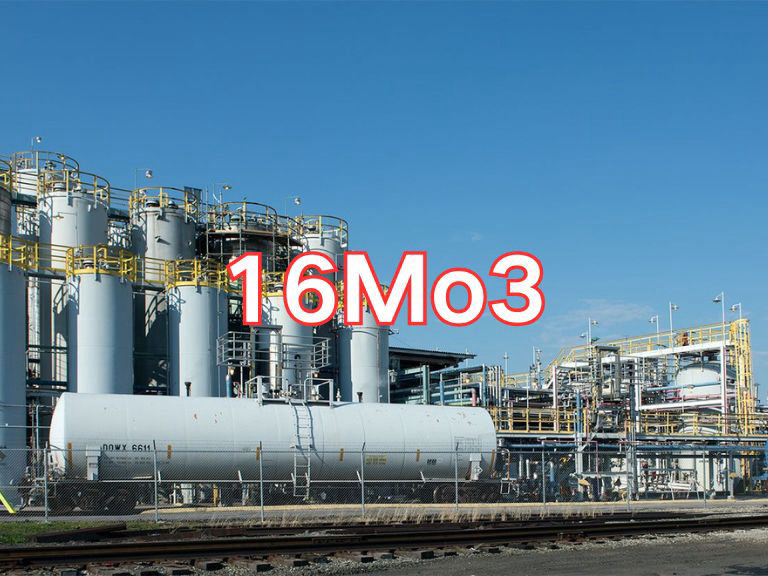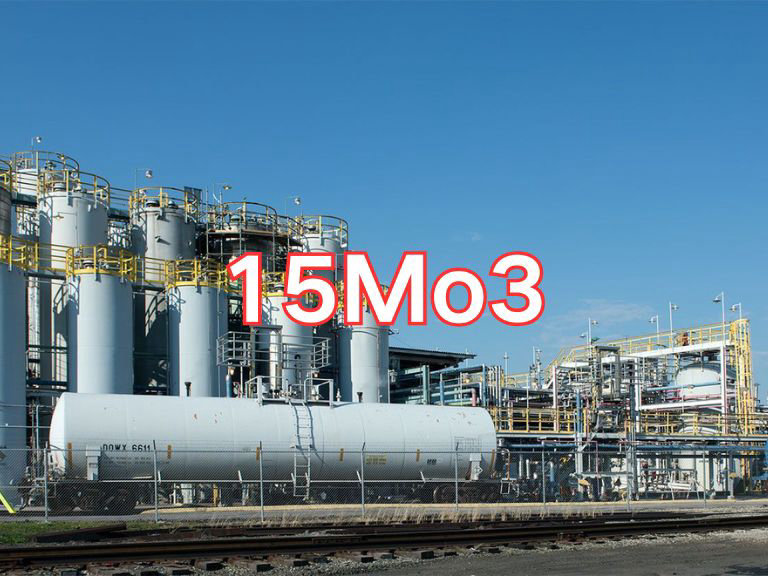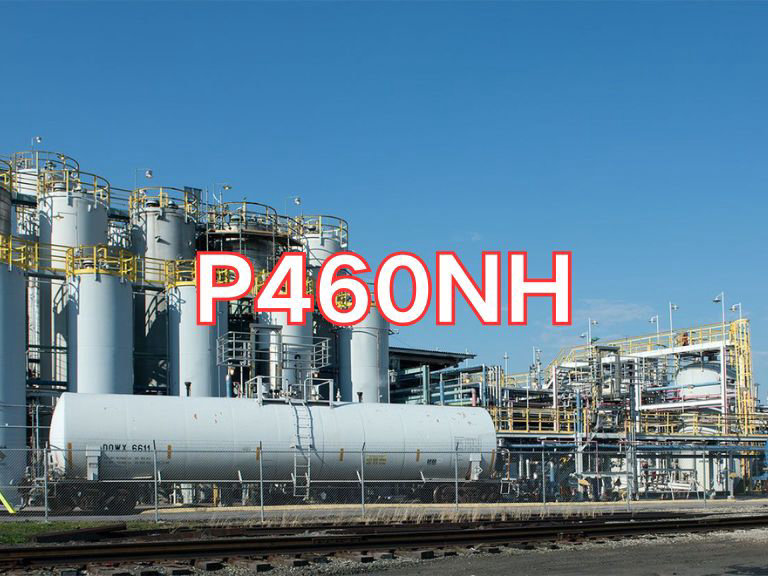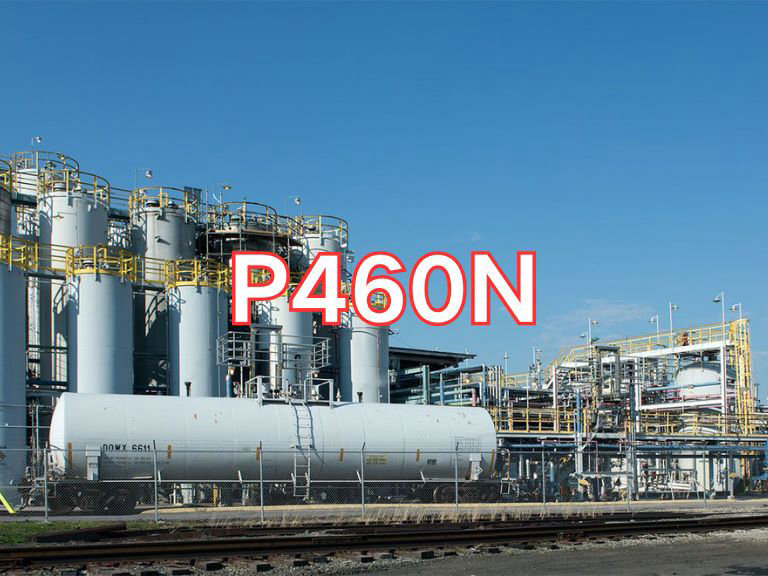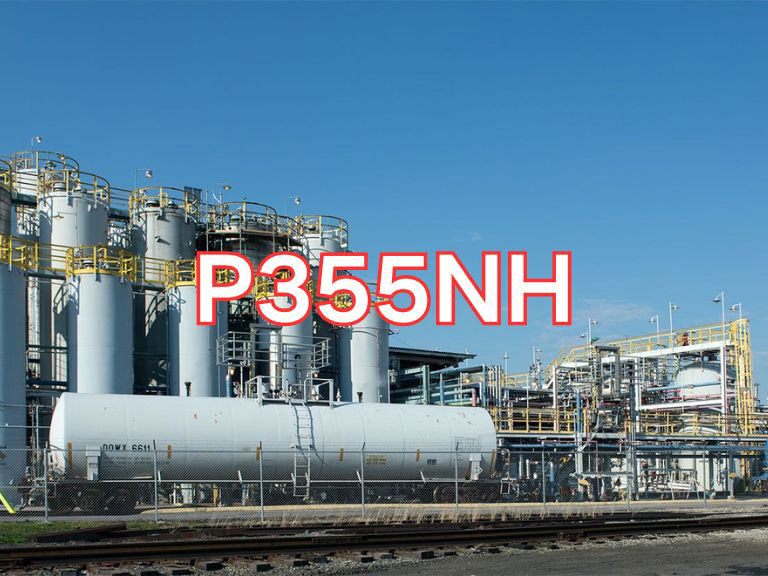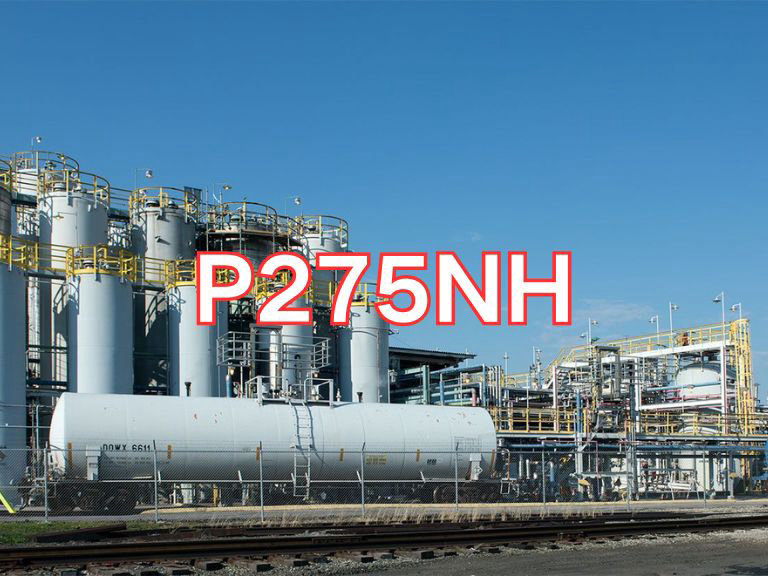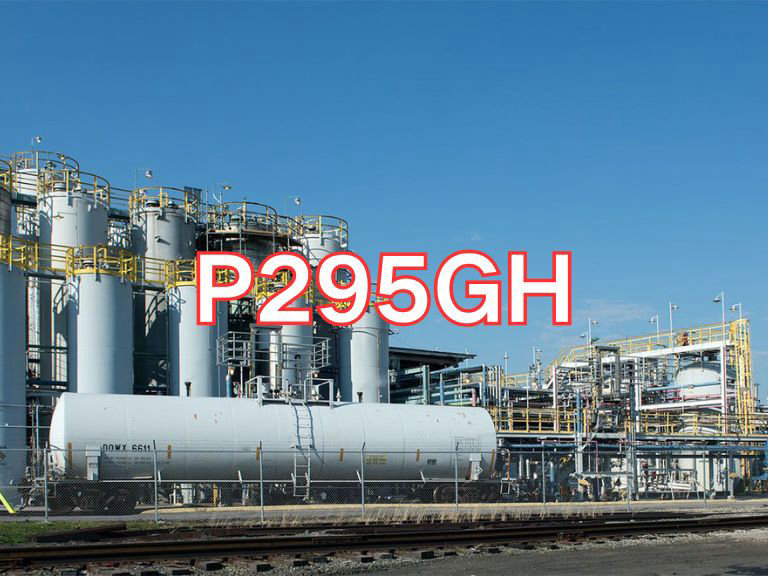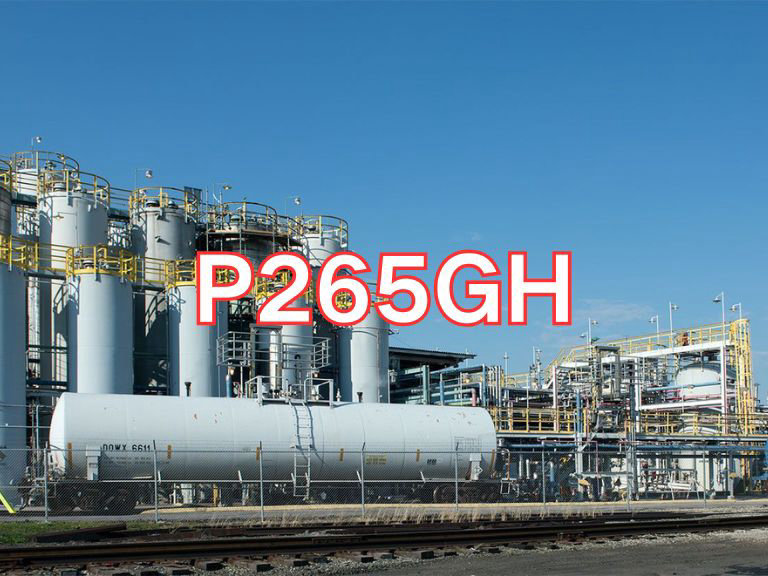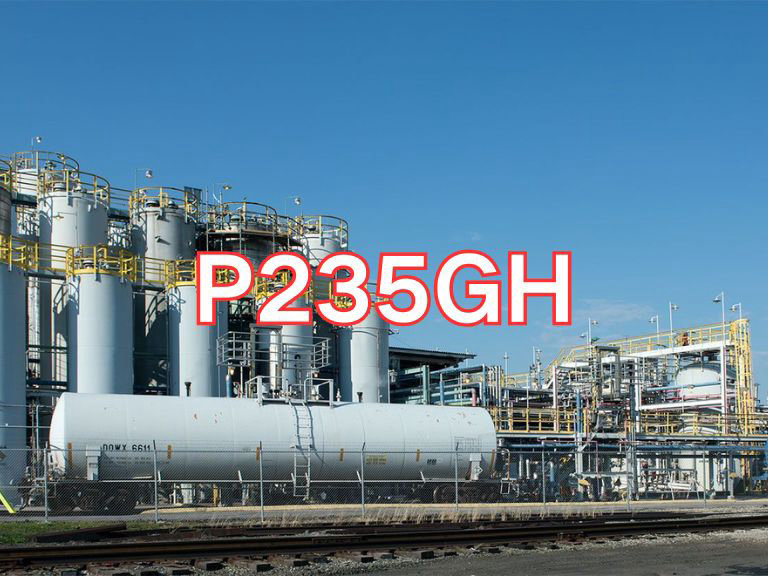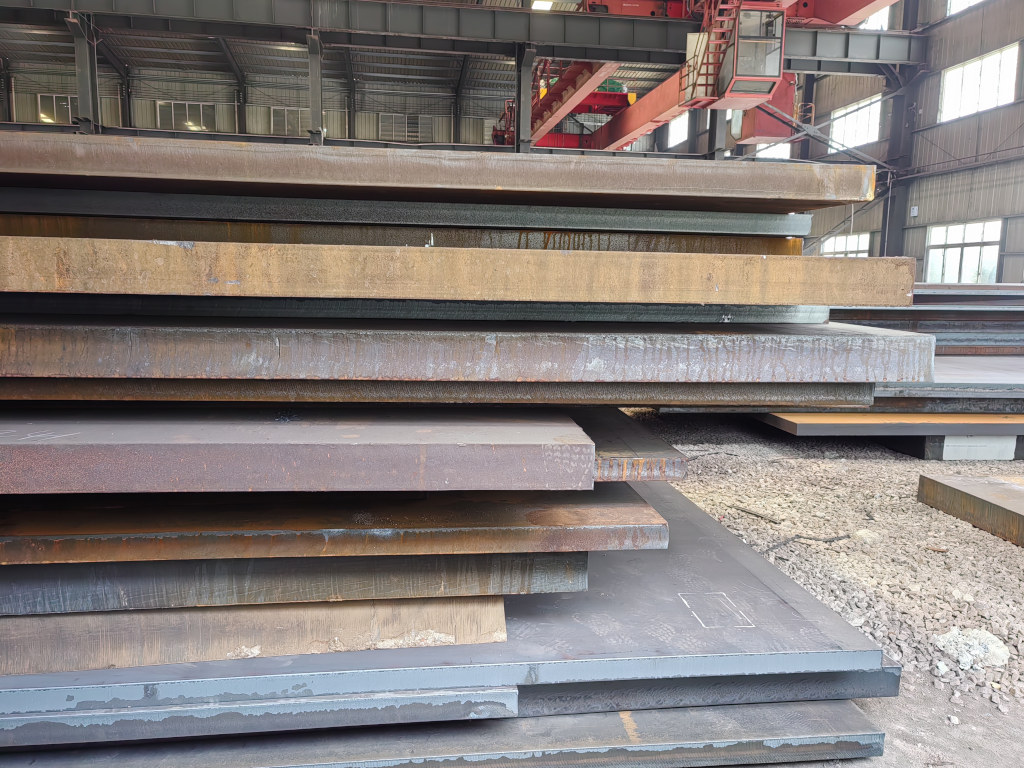

Q345R
1. Brief Introduction
Q345R is a low-alloy high-strength steel plate for pressure vessels specified by the Chinese national standard GB/T 713.2-2023. "Q" stands for yield strength, "345" indicates a minimum yield strength of 345 MPa when the thickness is ≤16 mm, and "R" stands for "Rong" (Container). It possesses excellent comprehensive mechanical properties (strength, ductility, and toughness), good weldability, and processability, and is widely used in industries such as petrochemicals, power stations, and boilers for manufacturing reactors, heat exchangers, spherical tanks, and other pressure vessels.
2. Grade Designation
The grade "Q345R" is named and interpreted according to the Chinese national standard GB/T 713.2-2023:
- Q: The first letter of the pinyin "Qu" , meaning "yield," indicating the steel's yield strength.
- 345: Indicates the specified minimum yield strength value in megapascals (MPa) when the steel thickness is ≤16 mm.
- R: The first letter of the pinyin "Rong", meaning "container," indicating that this steel is specifically intended for pressure vessels.
Therefore, Q345R can be directly interpreted as "steel for pressure vessels with a minimum yield strength of 345 MPa."
3. Physical Properties
The core physical properties of Q345R are primarily reflected in its mechanical properties, which may vary slightly with increasing plate thickness:
| Thickness (t) mm | Yield Strength MPa ≥ | Tension (Rm) MPa | Enlongation (A) % ≥ | Impact Test Energy (KV2, 0℃ or -20℃) J ≥ |
|---|---|---|---|---|
| t ≤ 16 | 345 | 470 - 640 | 21 | 34 |
| 16 < t ≤ 36 | 325 | 470 - 640 | 20 | 34 |
| 36 < t ≤ 60 | 315 | 470 - 640 | 20 | 34 |
| 60 < t ≤ 100 | 305 | 470 - 640 | 20 | 34 |
| 100 < t ≤ 150 | 285 | 450 - 620 | 20 | 34 |
| 150 < t ≤ 200 | 265 | 450 - 620 | 20 | 34 |
Additionally, it exhibits good cold bending performance (180° bending test, d=2a) and high-temperature performance (e.g., at 500°C, the yield strength remains no less than 180 MPa).
4. Chemical Properties
The chemical composition of Q345R is designed to ensure its strength, toughness, weldability, and corrosion resistance, characterized by low carbon content, moderate alloying with manganese and silicon, and strict control of harmful elements. Its ladle chemical composition must meet the following requirements (%):
| Element | Requirements (%) | Element | Requirements (%) |
|---|---|---|---|
| Carbon (C) | ≤ 0.20 | molybdenum (Mo) | ≤ 0.08 |
| Silicon (Si) | ≤ 0.55 | Niobium (Nb) | ≤ 0.050 |
| Manganese (Mn) | 1.20 - 1.70 | Vanadium (V) | ≤ 0.050 |
| Phosphorus (P) | ≤ 0.025 | Titanium (Ti) | ≤ 0.030 |
| Sulfur (S) | ≤ 0.010 | Alt | ≥ 0.020 |
| Copper (Cu) | ≤ 0.30 | Cu+Ni+Cr+Mo | ≤ 0.70 |
| Nickel (Ni) | ≤ 0.30 | ||
| Chromium (Cr) | ≤ 0.30 |
Strict control of phosphorus and sulfur (P ≤ 0.025%, S ≤ 0.010%): Low impurity content helps improve the steel's purity, thereby enhancing toughness, ductility, resistance to brittle fracture, and reducing the risk of hot cracking during welding.
5. Application Fields
Due to its balanced performance and cost-effectiveness, Q345R is the primary material for manufacturing medium- and low-pressure pressure vessels and is widely used in:
- Petrochemical Industry: Various raw material storage tanks, reactor shells, heat exchanger shells, separators, and towers.
- Gas Industry: Liquefied petroleum gas (LPG) storage tanks, liquid ammonia storage tanks, compressed air storage tanks, and industrial gas storage tanks.
- Energy and Power: Low-pressure steam drums in boiler systems, deaerator water tanks, and low-pressure heater shells.
- Pharmaceutical and Food Industries: Fermenters, mixing tanks, liquid storage tanks, etc. (must meet hygiene requirements).
- Environmental water treatment and general industrial sectors for pressure vessels.
6. Testing and Production Methods
Testing Methods:
Mechanical Testing: Includes tensile testing (to determine yield strength, tensile strength, and elongation), Charpy V-notch impact testing (to determine low-temperature impact toughness, typically at 0°C or -20°C), and bending tests.
Non-Destructive Testing (NDT): Ultrasonic testing (UT) is commonly used to detect internal defects such as laminations and inclusions in the steel plate. Common requirements are Level II or Level I according to NB/T 47013.3.
Other Tests: Depending on requirements, high-temperature tensile testing and thickness-direction (Z-direction) property testing may also be performed.
Production Methods:
Steelmaking and Continuous Casting: Typically produced using basic oxygen furnace (BOF) or electric arc furnace (EAF) steelmaking, followed by secondary refining (e.g., LF ladle furnace, RH vacuum degassing) to precisely control composition and remove harmful gases and inclusions.
Rolling: Controlled rolling or thermomechanical controlled processing (TMCP) is employed, refining grain structure and optimizing properties by controlling rolling temperature and deformation.
Heat Treatment: The most common delivery condition is normalized (N). Normalizing (heating to 30–50°C above Ac₃ and then air cooling) refines grain size, homogenizes the microstructure, significantly improves the plate's toughness—especially low-temperature impact toughness—and enhances its processability.
7. Equivalent Grades in International Standards
Q345R has comparable or equivalent grades in international standards for pressure vessel steels. However, substitution must be strictly evaluated by comparing specifications and requirements according to design codes.
United States (ASTM)
A516/A516M Gr.70: This is the most commonly used and closest equivalent to Q345R. It is also used for medium- and low-temperature pressure vessels, with similar mechanical properties and chemical composition.
Europe (EN)
P355GH: A normalized, weldable fine-grain steel from EN 10028-2. Its defined yield strength (355 MPa) and application are similar to Q345R.
Japan (JIS)
SPV355: A pressure vessel steel specified in JIS G3115. Its tensile strength range and yield strength value are close to those of Q345R.
In the current standard GB/T1591-2018, the Q345 steel grade has been replaced by Q355. The most noticeable difference is the change in manganese (Mn) content in Q355, which has been adjusted from the original 1.0–1.60 to ≤1.60, eliminating the lower limit requirement. Recent scientific findings indicate that Mn content is no longer a determining factor for the strength and mechanical properties of steel.

Ultrasonic Testing (UT)
A key non-destructive testing technique that uses high-frequency sound waves to detect internal flaws in steel plates. The probe emits sound waves, which reflect when encountering defects such as cracks or inclusions. The receiver captures the echoes, enabling precise determination of defect location and size. With high sensitivity, strong penetration, and fast inspection speed, UT effectively ensures internal quality, widely used in the production of heavy plates, pressure vessel plates, and other high-end products to guarantee safety and reliability.

Magnetic Particle Testing (MT)
A common surface inspection method that magnetizes the workpiece, causing leakage magnetic fields at surface or near-surface defects like cracks or inclusions, which attract magnetic particles to form visible indications. Simple to operate and highly sensitive, MT is suitable for rapid inspection of surface and near-surface flaws in ferromagnetic materials, widely used for online or offline inspection of plate edges, ends, and welds, ensuring product quality and safety.

Penetrant Testing (PT)
A non-destructive method for detecting surface-breaking flaws. A penetrant liquid is applied to the cleaned steel surface, allowing it to seep into defects such as cracks or pores. After removing excess penetrant, a developer is applied, causing the trapped penetrant to bleed out and form visible indications. Simple and cost-effective, PT is suitable for inspecting surface defects in various non-porous materials, commonly used for welds, castings, and complex components, effectively ensuring surface quality of steel plates.


